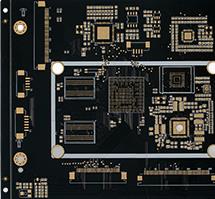With the introduction of surface mount technology, the packaging density of PCB circuit boards has increased rapidly. Therefore, even for some PCB circuit boards with low density and small quantity, the automatic detection of PCB circuit boards is basic. In complex PCB circuit board inspection, the needle bed test method and the double probe or flying probe test method are two common methods.
1. Needle bed test method
In this method, a probe with a spring is connected to each detection point on the PCB circuit board. The spring makes each probe have a pressure of 100-200g to ensure good contact at each detection point. Such probes are arranged together and are called "beds of needles". Under the control of the detection software, the detection points and detection signals can be programmed. Although the needle bed test method may be used to detect both sides of the PCB circuit board at the same time, when designing the PCB circuit board, all the detection points should be on the PCB. The welding surface of the circuit board. The needle bed tester is expensive and difficult to repair. According to the specific application of the needle, the probes in different arrangements are selected.
A basic general-purpose grid processor consists of a drilled board with 100, 75, or 50 mils between the centers of the pins. The pins act as probes and use electrical connectors or nodes on the PCB circuit board for direct mechanical connection. If the pads on the PCB circuit board match the test grid, then the polyester film punched in accordance with the specification will be placed between the grid and the PCB circuit board to facilitate the design of specific detection. Continuity detection is achieved by accessing the end points of the grid (which have been defined as the x-y coordinates of the pad). Since every network on the PCB circuit board is tested for continuity. In this way, an independent test is completed. However, the proximity of the probe limits the effectiveness of the bed-of-needle test method.

2. Double probe or flying probe test method
The flying probe tester does not rely on the pin pattern installed on the fixture or bracket. Based on this system, two or more probes are mounted on a tiny magnetic head that can move freely on the x-y plane, and the test points are directly controlled by CADI Gerber data. The dual probes can move within a distance of 4 mils from each other. The probes can move independently, and there is no real limit to how close they are to each other. The tester with two arms that can move back and forth is based on the measurement of capacitance. The PCB circuit board is pressed tightly and placed on the insulating layer on a metal plate as the other metal plate of the capacitor. If there is a short circuit between the lines, the capacitance will be larger than at a certain point. If there is an open circuit, the capacitance will become smaller.
The standard grid of PCB manufacturers for general-purpose grids, boards with pin components and surface mount equipment is 2.5mm, and the test pad should be greater than or equal to 1.3mm at this time. If the grid is small, the test needle is small, brittle, and easily damaged. Therefore, it is best to choose a grid larger than 2.5mm. The combination of a universal tester (standard grid tester) and a flying probe tester can make the detection of high-density PCB circuit boards accurate and economical. Another method is to use a conductive rubber tester. This technique can be used to detect points that deviate from the grid. However, the height of the pads that are leveled by hot air is different, which will hinder the connection of the test points.
The following three levels of testing are usually carried out:
1) Bare board inspection; 2) Online inspection; 3) Function inspection.
The PCB factory uses a general-purpose tester, which can test a class of styles and types of PCB circuit boards, and can also be used for special applications.